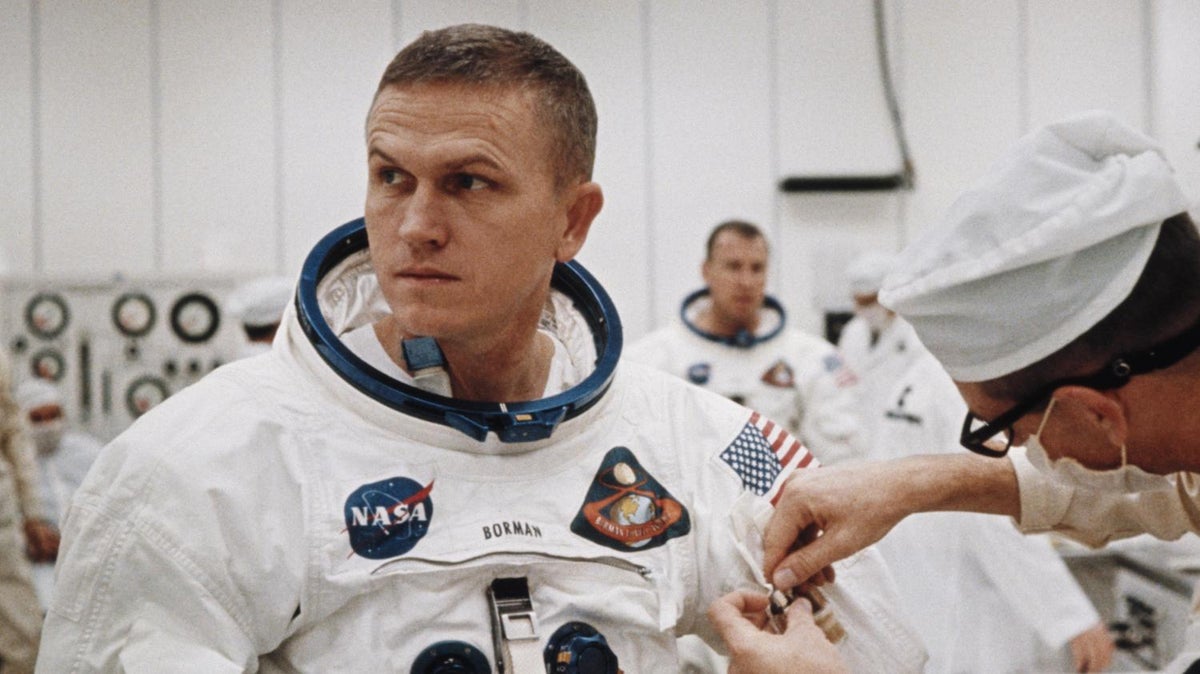
Frank Borman, the commander of NASA’s Apollo 8 voyage into space that orbited humans around the moon for the first time, has died aged 95.
Borman passed away on Tuesday in Billings, Montana, according to a statement made by NASA Administrator Bill Nelson.
“Today, we remember one of NASA’s best. Astronaut Frank Borman was a true American hero,” Mr Nelson wrote.
Borman, along with his fellow astronauts James Lovell and William Anders, were the first manned Apollo mission to fly to the moon and circle it 10 times, nearly 60 miles above the surface.
The trio slipped into the moon’s orbit on Christmas Eve 1968 after already travelling for three days.
It was that day that the crew made the historical broadcast from the orbiter and read from the Book of Genesis “In the beginning, God created the heaven and the earth. And the earth was without form, and void; and darkness was upon the face of the deep.”
Borman ended the broadcast, saying, “And from the crew of Apollo 8, we close with good night, good luck, a Merry Christmas, and God bless all of you — all of you on the good Earth.”
While on this flight, the group shot the legendary “Earthrise” picture consisting of the illuminated Earth floating in the black vacuum of space.
What surprised people about Borman was his ability to whittle down space travel to what it was, despite being one of the very few humans who have gotten to see Earth from a distance.
“It didn’t really change my views much,” he said in an interview in 1986.
“The grandeur of nature is a given. Seeing the moon on Christmas was no different than seeing the Grand Canyon on Easter morning. Sure, it was moving, but it was moving because of our isolation and because everything we valued was back on Earth.”
The astronaut was once described by a NASA psychiatrist as the least complicated man he had ever met, said The Times.
Before he gained worldwide recognition for his 1968 historical space odyssey, he started his career in the Air Force.
Borman was born in Gary, Indiana, on 14 March 1928 but was raised in Tucson, Arizona.
At the age of 15, Borman discovered his affinity with aeroplanes and got his first pilot’s license at a young age.
This led him to a career with the Air Force in 1950, and he performed a plethora of roles, from a fighter pilot to an experimental test pilot.
Apollo 8 astronauts Frank Borman, James Lovell and William Anders, who were part of the first Apollo lunar orbital mission— ( Nasa/AFP/Getty Images)
That same year, he married his high school sweetheart, Susan Bugbee, who died in 2021.
Before long, NASA came knocking and selected Borman in 1962 while instructing at the Aerospace Research Pilot School in California.
Borman is particularly noted as being a pioneer in space exploration, a veteran from both a space orbital rendezvous where he met another spacecraft as it orbited the Earth in 1965, as well as the Apollo 8 mission in 1968.
When asked if he wanted to walk on the moon, he said he didn’t want to.
“I would have not accepted the risk involved to go pick up rocks,” he said, according to The New York Times.
“I love my family more than anything in the world. I would have never subjected them to the dangers simply for me to be an explorer.”
He recalled in past interviews that he was simply there because of the Cold War and to “beat the Russians”, who were racing to the moon.
Two years later, Borman retired from the Air Force but carried on in the aviation business, becoming the senior Vice President-Operations Group of Eastern Airlines.
During his tenure, fuel price increases and the deregulation of the airline industry plummeted the company into labour issues and debt.
He resigned in 1986 when it was taken over by Texas Air.
In 1998, he bought a cattle ranch in Montana with his son Fred. He is survived by his sons Fred and Edwin and their families.







